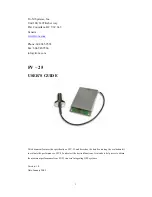
Chapter 2: General Operation
19
2.7 Using CompactFlash cards
Cautions
CAUTION: CompactFlash Card Installation
When installing CompactFlash cards ensure that the card is fitted the correct
way around. DO NOT try to force the card into position as this may result in
irreparable damage to the card.
CAUTION: Water Ingress
To prevent the ingress of water and consequent damage to the display,
ensure that the chart card door is firmly closed at all times. This can be
confirmed by an audible click.
CAUTION: Card Removal
DO NOT use a metallic instrument such as a screwdriver or pliers to help you
remove a card, as doing this can cause irreparable damage.
CAUTION: Card writing
CompactFlash cards can be damaged if they are removed from the unit
during either a read or write operation. A warning is displayed during write
operations. The unit is continually reading the card. It is therefore essential
that before removing the card you follow the correct procedure to stop
access to the card.
What are CompactFlash cards used for?
CompactFlash cards enable you to get the most from your display. Their uses include:
•
Detailed cartographic information
Obtain detailed cartographic information of the area that you navigate using Nav-
ionics® chart cards. To check the current availability of Navionics chart card types,
please visit
www.navionics.com or www.navionics.it.
The amount of cartographic detail shown varies for different areas and for differ-
ent scales. The chart scale in use is indicated in the status bar - the number repre-
sents the distance in nautical miles from the top of the chart window to the
bottom of the chart window.
•
Archiving
To archive waypoints, routes and tracks.
•
Saving
To save waypoint, route and track data for use by other equipment e.g. a PC.
You can remove and insert cards while a chart is displayed provided that you follow the
correct procedure (see
page 20
). The chart information is retained on-screen until the
chartplotter redraws the screen; for example, when you pan outside the current area,
or use the
RANGE
button to change the chart scale.
Note: In a networked system, cartographic data is available to any E-Series display
connected on the SeaTalk High Speed network. However, the ARCHIVE and TRANSFER
functions only operate with the card inserted in the display at which you are working.
Summary of Contents for E120W
Page 1: ...E Series Networked Display Reference Manual Document number 81244_2 Date March 2006...
Page 22: ...6 E Series Networked Display Reference Manual...
Page 48: ...32 E Series Networked Display Reference Manual...
Page 194: ...178 E Series Networked Display Reference Manual...
Page 200: ...184 E Series Networked Display Reference Manual...
Page 206: ...190 E Series Networked Display Reference Manual...
Page 226: ...210 E Series Networked Display Reference Manual...
Page 254: ...238 E Series Networked Display Reference Manual...
Page 272: ...256 E Series Networked Display Reference Manual...
Page 276: ...260 E Series Networked Display Reference Manual...














































